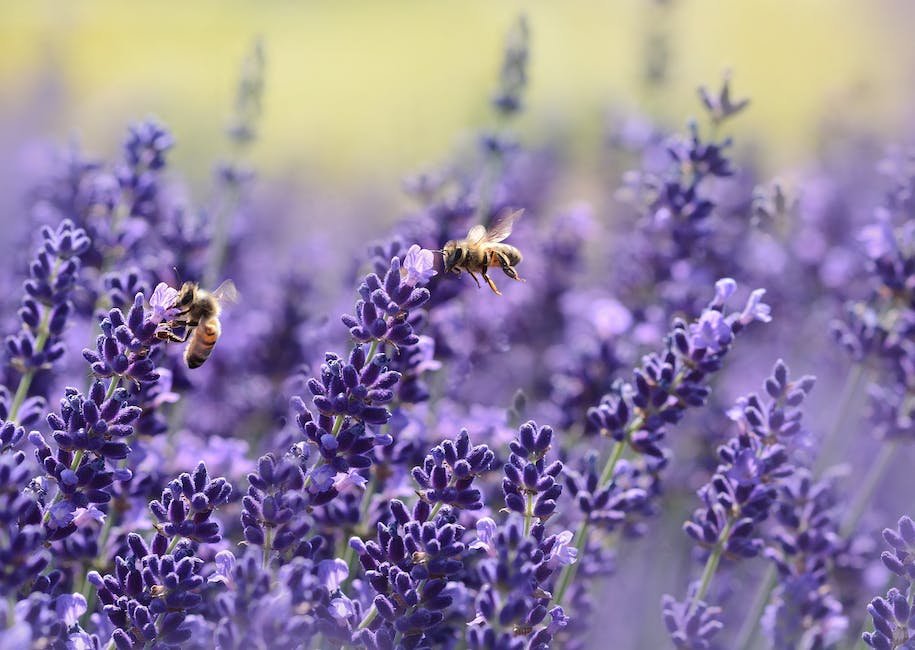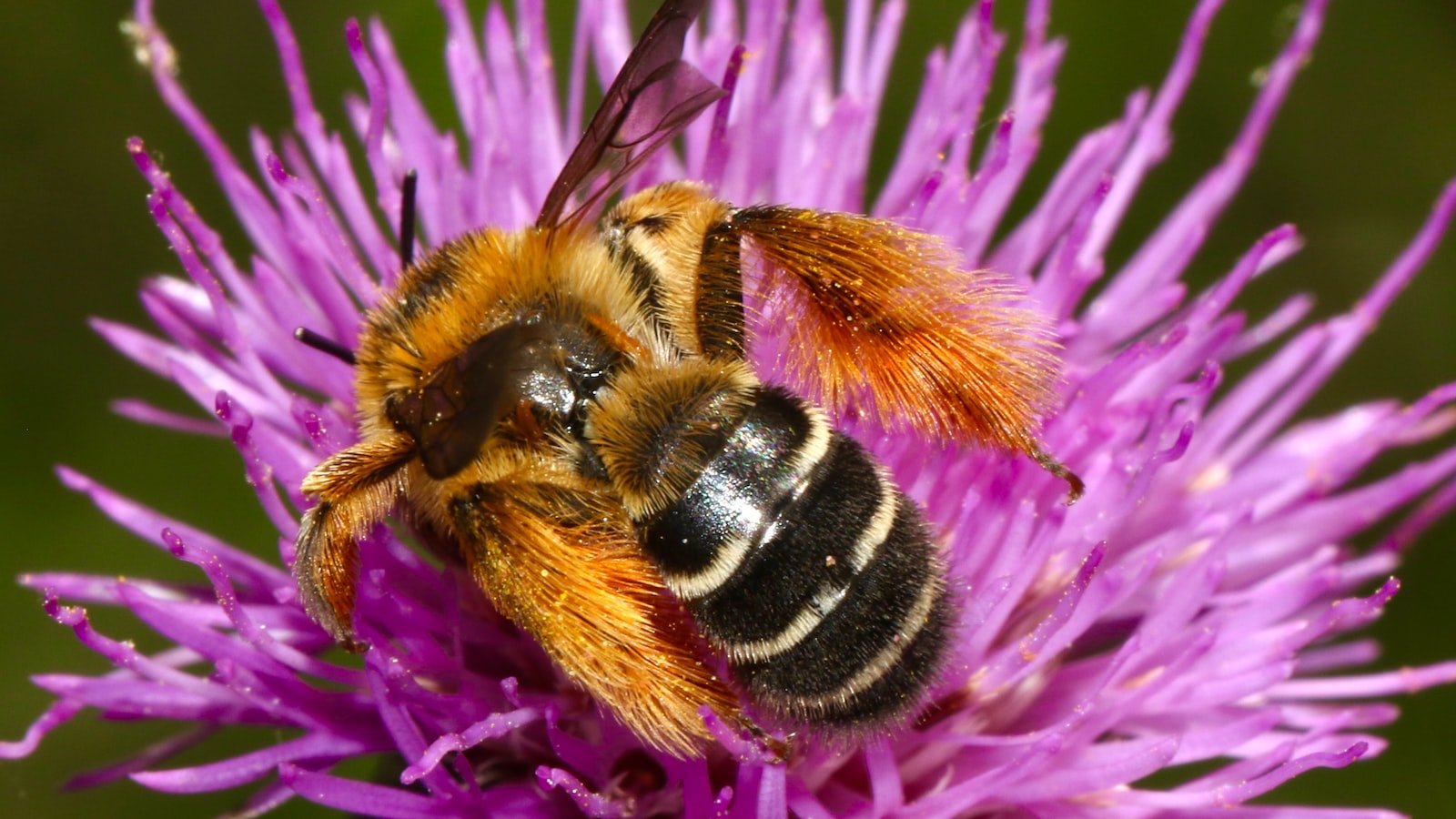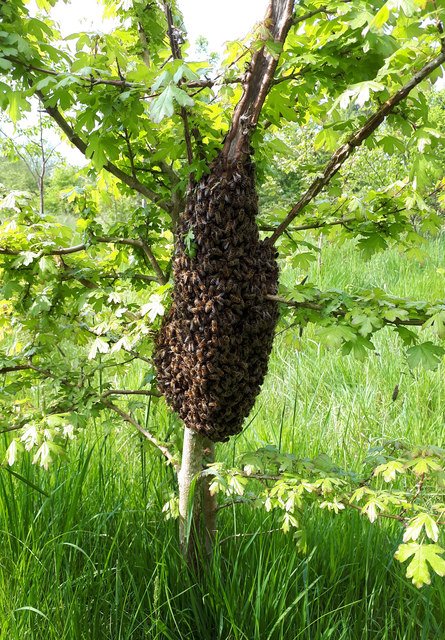As the sun peeks over the rolling hills, a bustling community comes to life within a maze of hexagonal cells. The honeybees awaken, shaking off their slumber and embarking on a vital mission for the survival and prosperity of their hive. But what, you may wonder, is the secret behind their extraordinary harmony and flourishing health? The answer lies in the intricate dance of bee socialization. In this article, we will delve into the enchanting world of these charismatic insects and explore the pivotal role of their social interactions in ensuring the wellness of the entire hive. From communication and sharing knowledge to maintaining a strong defense system, the importance of bee socialization cannot be underestimated. So, put on your beekeeping veil, and let us unravel the fascinating intricacies that lie at the core of a thriving beehive.
Table of Contents
- Building Strong Social Bonds Within the Hive: Essential for Bee Health
- Understanding the Cooperative Nature of Bees: Key to Hive Prosperity
- The Role of Communication in Bee Colonies: Nurturing a Healthy Hive
- Promoting Socialization: Encouraging Hive Interactions for Overall Wellness
- Maintaining a Harmonious Social Structure: Strategies for Enhancing Bee Society
- Q&A
- In Retrospect

Building Strong Social Bonds Within the Hive: Essential for Bee Health
In the bustling world of bees, building strong social bonds within the hive is not just a matter of preference but an essential component of their very survival. Bees are not solitary creatures; they rely on a highly complex social structure to thrive and flourish. The intricate network of interactions and relationships formed within the hive greatly contributes to the overall health and well-being of the entire colony.
One of the key aspects of fostering strong social bonds within the hive is communication. Bees have developed a sophisticated language of vibrations and dances to convey important messages to their fellow hive members. The famous waggle dance serves as a roadmap, guiding the other bees to a newly discovered food source or signaling the need to relocate the hive. This intricate form of communication strengthens the cohesion of the hive, enabling its residents to work together as a harmonious unit.
Furthermore, the division of labor within the hive is crucial for maintaining its productivity. Each bee has a designated role, whether it is the diligent worker, responsible for foraging, or the nurturing nurse bee, tending to the needs of the brood. By specializing in specific tasks, bees ensure the efficient functioning of the entire colony. They rely on precise coordination and teamwork, where every individual understands its role and carries it out with utmost dedication.
Ultimately, building strong social bonds within the hive not only contributes to the overall health and sustainability of bee populations but also enhances their ability to face the countless challenges in their environment. By working together, bees are more resilient, adapt faster, and navigate through obstacles with greater ease. Understanding the intricacies of their social structure sheds light on the remarkable intelligence and complexity of these buzzing creatures, reminding us of the importance of nurturing social connections for the well-being of all living organisms.

Understanding the Cooperative Nature of Bees: Key to Hive Prosperity
The Importance of an Interdependent Bee Society
Bees are incredible creatures that exhibit a highly cooperative nature within their hives. This cooperative behavior is crucial to the overall prosperity and success of the hive as a whole. Each bee in the colony has a specific role and responsibility that contributes to the well-being and functionality of the hive.
The Honeybee Workforce: The efficiency of a hive relies on the division of labor among its members. At the heart of this organization are the worker bees. These industrious females perform a plethora of tasks, such as collecting nectar, pollen, and propolis, building and repairing honeycombs, feeding larvae, protecting the hive, and tending to the queen. Their individual efforts, coupled with precise communication, coordination, and collaboration, result in a thriving and productive hive.
Intercommunication and Collaboration: Bees have a remarkable ability to communicate with one another. Through intricate movements and pheromone signals, they convey vital information to their colony mates, such as the location of food sources, the presence of danger, or the need for more workers. This seamless exchange of information ensures the efficient allocation of resources and enables the collective decision-making essential for the hive’s prosperity.
Unity for Survival: The survival of a bee colony heavily relies on the collective efforts of its members. Whether during the colder months when bees form a winter cluster to generate warmth and conserve energy or when facing threats like predators or diseases, bees stand together in unity to protect and sustain their hive. This cooperative spirit, backed by their unrivaled work ethic, allows bees to overcome challenges and thrive as a cohesive unit.

The Role of Communication in Bee Colonies: Nurturing a Healthy Hive
Communication plays a vital role in the intricate workings of a bee colony, acting as the foundation for the overall health and success of the hive. Bees have developed a remarkable system of communication that enables them to collaborate effectively and support their thriving community. This intricate communication network ensures the survival of the hive and allows for efficient division of labor among its members.
One of the most fascinating aspects of communication in bee colonies is the famous “waggle dance” performed by worker bees. Through this mesmerizing dance, worker bees convey valuable information about the location of food sources to their fellow hive members. Using precise movements and varying durations of waggling, bees communicate the direction and distance of the food source in relation to the sun and hive.
Additionally, bees utilize pheromones as a means of communication within the hive. Pheromones are chemical signals released by individual bees that can convey important messages to the entire colony. For instance, the queen bee releases a specific pheromone known as “queen substance” that helps maintain order and regulate the overall behavior of the colony. This chemical communication ensures efficiency and coordination among bees, enhancing the overall health and stability of the hive.
- Through their dance and pheromone-based communication, bees can:
- Allocate tasks and distribute responsibilities, ensuring optimal division of labor.
- Provide precise information on food sources, maximizing foraging efficiency.
- Maintain social order and hierarchy, promoting harmony within the colony.
- Alert the hive to potential dangers and initiate collective defense mechanisms.
Ultimately, the ability of bees to communicate effectively is crucial for the well-being of the hive. This intricate web of communication allows bee colonies to thrive in their environment, showcasing the remarkable intelligence and complexity of these tiny yet vital creatures.

Promoting Socialization: Encouraging Hive Interactions for Overall Wellness
Social interaction is an essential aspect of fostering overall wellness in the hive. Encouraging hive interactions not only promotes a sense of unity but also contributes to the overall health and productivity of the colony.
Benefits of Socialization in the Hive:
- Improved communication: Regular interactions among hive members enhance the exchange of important information, such as food sources and potential threats.
- Reduction of stress and loneliness: Like humans, bees need companionship. Engaging in social activities helps mitigate stress and prevents feelings of isolation.
- Increased learning opportunities: Interacting with other members of the hive allows for the transmission of crucial skills and knowledge, ensuring the survival and success of the colony.
- Growth in problem-solving abilities: By collaborating and sharing experiences, bees develop better problem-solving capabilities, which is crucial for navigating challenges and adapting to environmental changes.
Strategies to Promote Hive Interactions:
- Provide ample space: A spacious hive allows bees to move freely and engage with each other. Ensure there are enough combs and frames for the colony to grow and develop.
- Create social spaces: Designate areas within the hive where bees can socialize, such as communal feeding stations or resting spots.
- Encourage regular inspections: Regular hive inspections by beekeepers not only ensure the health of the colony but also offer opportunities for bees to interact with humans, fostering socialization.
- Introduce new members gradually: When adding new bees to the colony, gradually introduce them to the existing members. This helps establish social bonds and reduces aggression.
By prioritizing and promoting socialization within the hive, beekeepers can contribute to the overall wellness and success of their bee colonies.
Maintaining a Harmonious Social Structure: Strategies for Enhancing Bee Society
Creating and maintaining a harmonious social structure is essential for the survival and thriving of any society, including bees. Bees are renowned for their remarkable social organization and highly cooperative nature. To enhance the harmony within their society, beekeepers and researchers have discovered effective strategies that promote their well-being and productivity.
1. Providing Adequate Space: Similar to humans, bees also value personal space. Ensuring that hives have enough room enables bees to have their own individual cells and promotes a sense of tranquility within the colony. It is crucial to monitor hive growth regularly and add honey supers or additional brood boxes when necessary.
2. Maintaining a Balanced Diet: A healthy diet is fundamental to maintaining a harmonious bee society. Bees rely heavily on a diverse array of pollen and nectar for optimal nutrition. Planting a variety of flowers and providing supplementary feeding during times of scarcity can help ensure a balanced diet for the colony, maintaining their physical strength and mental well-being.
3. Promoting Effective Communication: Communication is vital in any society, and bees are masters at it. Implementing strategies that enhance communication among bees can strengthen their social structure. Providing a pheromone-rich environment and maintaining a clean hive can facilitate effective “bee language” and minimize the risk of miscommunication and conflict within the colony.
Q&A
Why is bee socialization important for hive wellness?
Bee socialization is crucial for hive wellness as it promotes a strong and organized bee community. Through social interactions, bees communicate, share resources, and coordinate tasks, which ultimately leads to a healthier and more productive hive.
How do bees communicate with each other?
Bees have a sophisticated communication system that involves a combination of pheromones, dances, and sound vibrations. They use these methods to convey information about food sources, hive location, and potential threats, enabling efficient collaboration within the hive.
What are the benefits of cooperative brood care among bees?
Cooperative brood care, where adult bees collectively raise and tend to the developing larvae, plays a vital role in hive wellness. This behavior ensures the survival and proper development of the brood, as it allows for the efficient allocation of resources and division of labor within the bee colony.
How does socialization impact the health of individual bees?
Socialization positively impacts individual bee health by reducing stress levels and boosting immunity. The social environment provides social support, grooming assistance, and temperature regulation, all of which contribute to the overall well-being of each bee and make them more resilient to diseases.
What role does social hierarchy play in bee socialization and hive wellness?
Social hierarchy in bees, characterized by castes such as queen, worker, and drone, ensures the smooth functioning of the hive. The queen’s dominance and the division of labor among workers create an efficient system, maximizing hive productivity and reproductive success.
How does socialization affect foraging behavior in bees?
Through socialization, bees share information about food sources, helping their nestmates locate and exploit them more effectively. By forming foraging teams, bees can efficiently collect nectar and pollen, which not only sustains the hive but also contributes to the pollination of plants in their ecosystem.
What happens when bees experience social isolation?
Social isolation can have detrimental effects on bee well-being. Isolated bees may exhibit increased stress, compromised immune systems, and decreased ability to perform essential hive tasks. It can disrupt the social dynamics of the colony, ultimately impacting the overall health and productivity of the hive.
In Retrospect
As our journey into the intricacies of hive wellness comes to a close, we are reminded that the strength and resilience of a beehive lie in the harmonious web of socialization that we have so marvelously unraveled. From the delicate waggle dance to the gentle grooming rituals, we have witnessed the extraordinary efforts of bees to maintain the equilibrium within their bustling communities.
Through their unwavering dedication to their roles, these incredible insects exemplify the true essence of teamwork and cooperation. Together, they build a tapestry of social bonds that transcends individual needs, prioritizing the collective health of their hive above all else. The reliance on effective communication techniques and an intricate division of labor ensures that every task, from foraging to nursing, is executed with the utmost precision and utmost care.
Yet, our newfound understanding of bee socialization holds a mirror to our own human society, where individualism often overshadows the importance of collective well-being. As we observe the resilience of these diligent creatures, we cannot help but marvel at their selflessness and unflinching dedication to the common good.
Let us be inspired by the bees and embrace the beauty of interdependence while nurturing a sense of interconnectedness in our own lives. By valuing community over isolation, by cherishing cooperation over competition, we can weave a more harmonious fabric of existence, not only for ourselves but for the world around us.
In closing, the importance of bee socialization for hive wellness goes far beyond the borders of their tiny homes. It is an intricately woven lesson that nature offers to us, urging us to recognize the strength in unity, the power in communication, and the beauty of collective success. Through the lens of these humble creatures, we are reminded that we are but a small thread in the grand tapestry of life, and it is in coming together, just like the bees, that we can truly flourish.
As an affiliate, my content may feature links to products I personally use and recommend. By taking action, like subscribing or making a purchase, you’ll be supporting my work and fueling my taco cravings at the same time. Win-win, right?
Want to read more? Check out our Affiliate Disclosure page.


